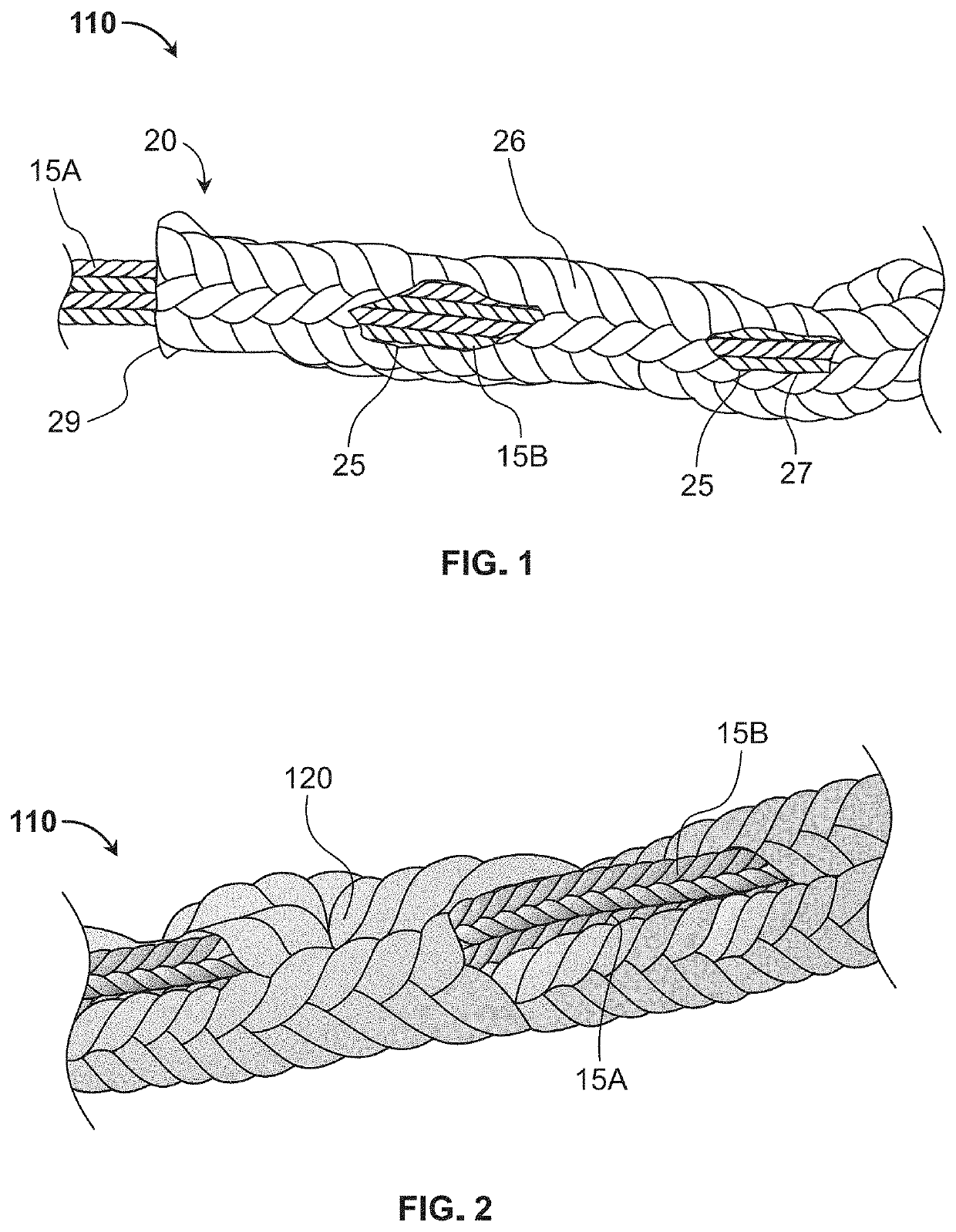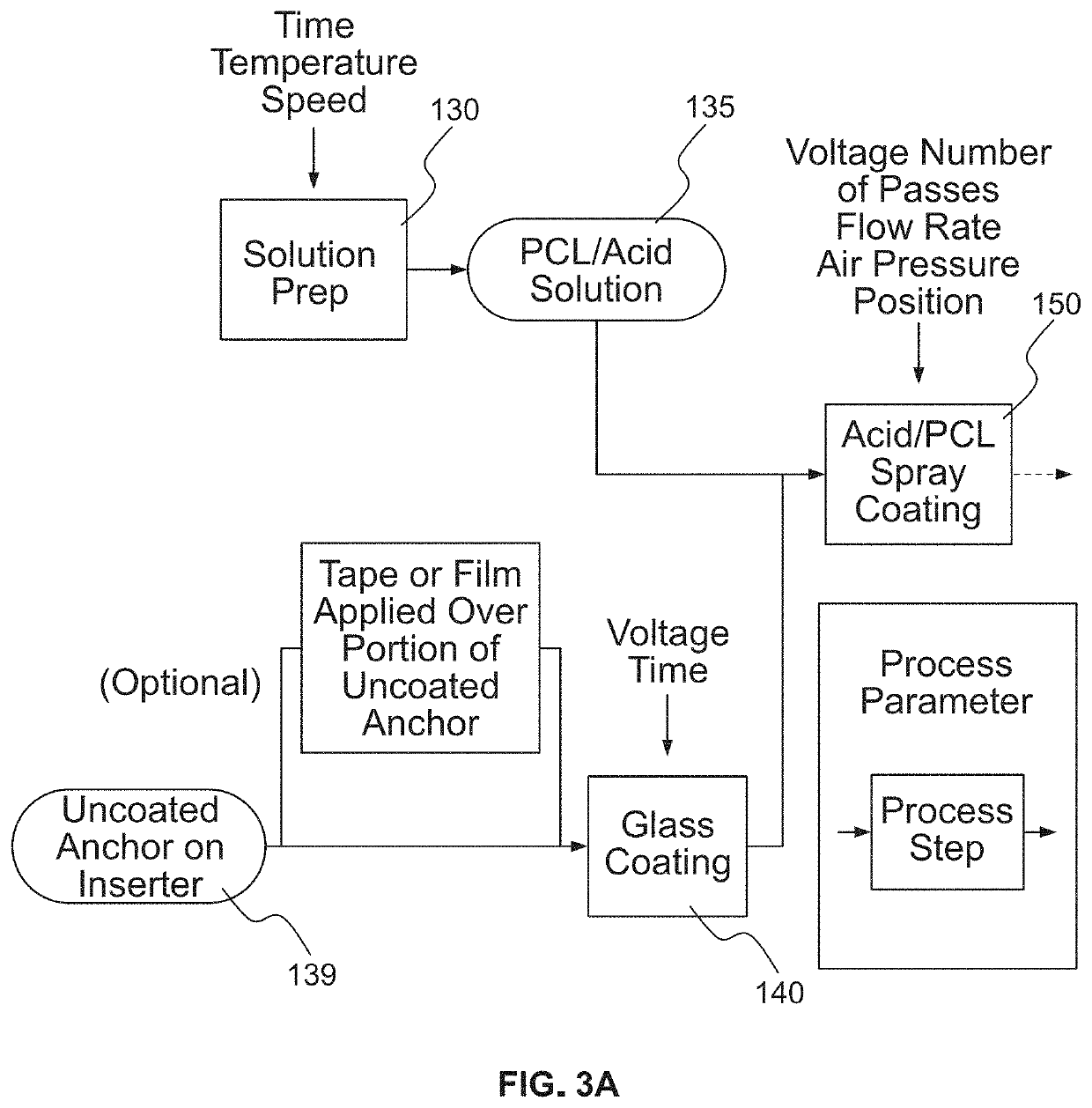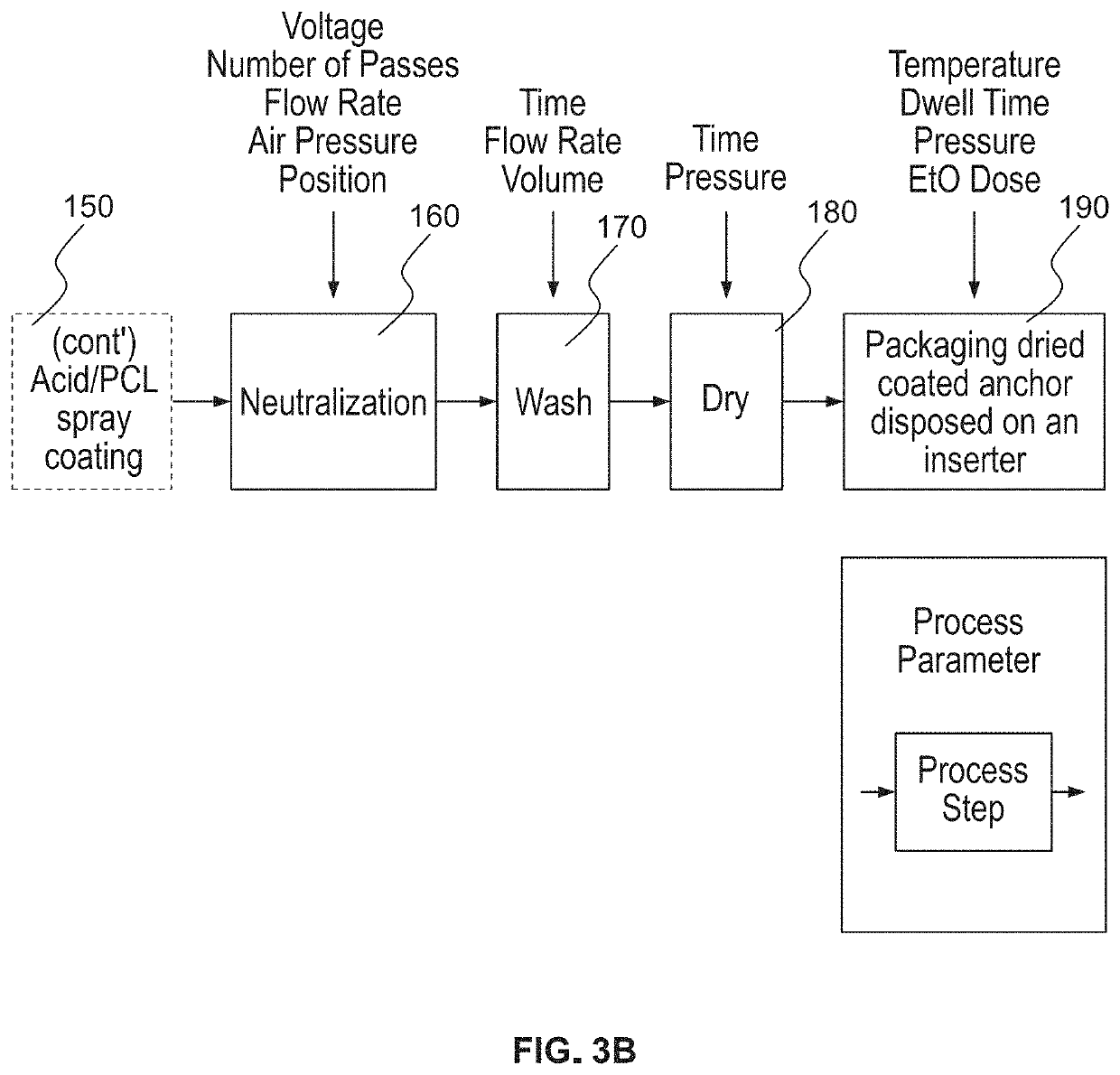Bioactive soft tissue implant and methods of manufacture and use thereof
a soft tissue implant and bioactive technology, applied in the field of bone suture anchors, can solve the problems of inability to use standard sutures as cores, high cost, and often insufficient effect of suture and coating combinations
- Summary
- Abstract
- Description
- Claims
- Application Information
AI Technical Summary
Benefits of technology
Problems solved by technology
Method used
Image
Examples
example 1-1
CL Solution
[0193]About 1.5 gram of PCL was added to about 10 g of glacial acetic acid (GAA) in a 50 ml plastic sample tube and the mixture was agitated over the course of several hours by intermittently vortexing using a Fisher Scientific Vortex Mixer to form a PCL solution. Other forms of mixing or sample agitation may be contemplated to solubilize the PCL. The PCL-GAA solution has a concentration of PCL greater than about 10 wt % and less than about 15 wt %. Concurrently, about 3.4 g of calcium phosphate (Vitoss® micromorsels, 1-2 mm, available from Stryker Orthobiologics) were placed into a mold (Aluminum, rectangular shaped, about 1.0 inch wide×4.0 inches long× 7 / 18 inches deep), where the mold was sprayed with cooking oil and excess oil wiped away with a kimwipe prior to adding the calcium phosphate. About 12 g of the 10 wt %-15 wt % PCL-GAA solution was added to the mold containing the calcium phosphate, and the mixture of PCL, GAA, and calcium phosphate was allowed to sit for...
example 1-2
ution
[0194]Example 1-2 is made using the same procedure described for Example 1-1, except about 1 g of PCL is added to about 10 g of GAA to form a 10 wt % PCL-GAA solution. The resulting scaffold is depicted in FIG. 8B.
example 1-3
lution
[0195]Example 1-3 is made using the same procedure described for Example 1-1, except about 0.75 g of PCL is added to about 10 g of GAA to form a 7.5 wt % PCL_GAA solution. The resulting scaffold is depicted in FIG. 8C.
PUM
| Property | Measurement | Unit |
|---|---|---|
| size | aaaaa | aaaaa |
| size | aaaaa | aaaaa |
| time | aaaaa | aaaaa |
Abstract
Description
Claims
Application Information
 Login to View More
Login to View More - R&D
- Intellectual Property
- Life Sciences
- Materials
- Tech Scout
- Unparalleled Data Quality
- Higher Quality Content
- 60% Fewer Hallucinations
Browse by: Latest US Patents, China's latest patents, Technical Efficacy Thesaurus, Application Domain, Technology Topic, Popular Technical Reports.
© 2025 PatSnap. All rights reserved.Legal|Privacy policy|Modern Slavery Act Transparency Statement|Sitemap|About US| Contact US: help@patsnap.com



